Epic storms, new moons and worlds that might host life: Here are Cassini’s greatest discoveries
Cassini arrived at Saturn in 2004, and it wasted no time making scientific discoveries.
The
Here are some highlights from Cassini’s 13 years at Saturn:
May 31, 2004
Cassini spies two new moons
From its close-in vantage point, the Cassini spacecraft spies two tiny moons that were previously unknown to science. Methone is an egg-shaped moon that speeds around the planet once every 24 hours. Pallene completes an orbit in under 28 hours. Scientists now think particles from both moons help form Saturn’s E ring. Discovery of Methone and Pallene brings the total number of Saturnian moons to 60.
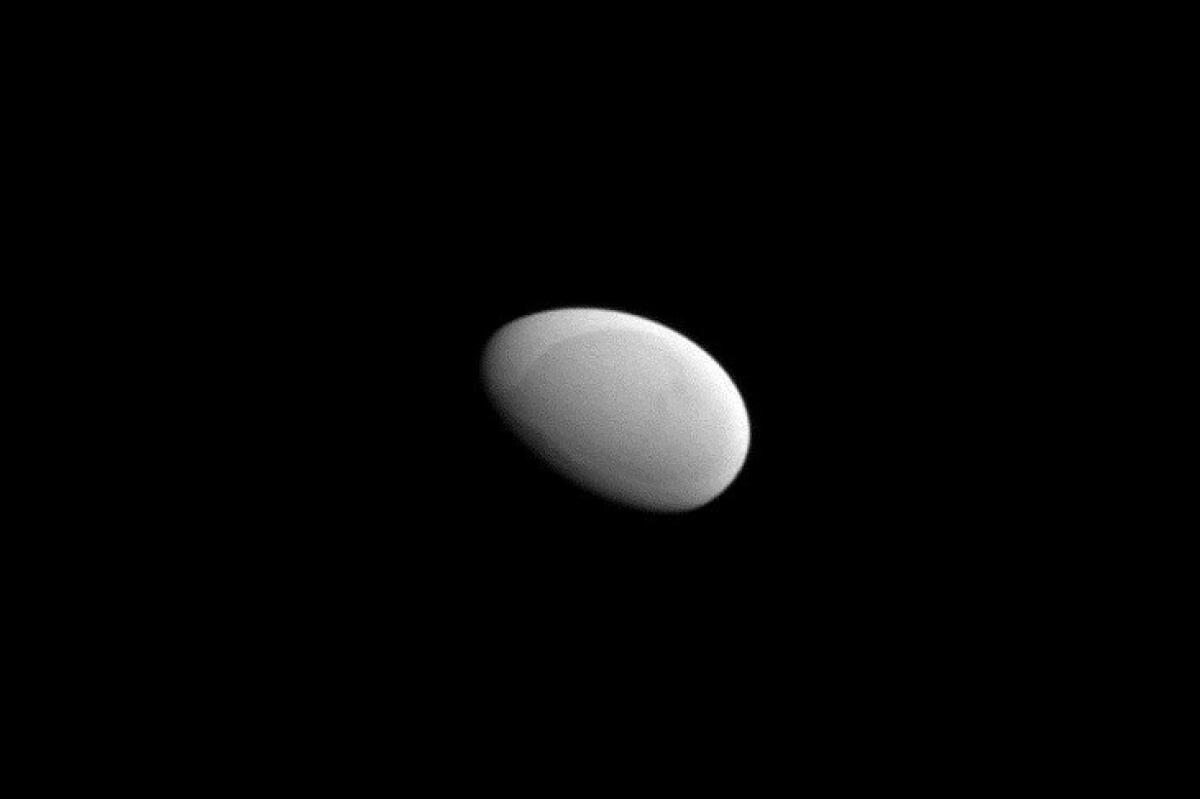
Jan. 14, 2005
Historic Huygens landing
About three weeks after detaching from Cassini, the European Space Agency’s Huygens probe lands on Titan, Saturn’s largest moon. It survives for 72 minutes on the frozen surface and reveals that Titan has a lot in common with Earth in terms of meteorology and geology. Huygens is the only spacecraft to land on a world in the outer solar system.
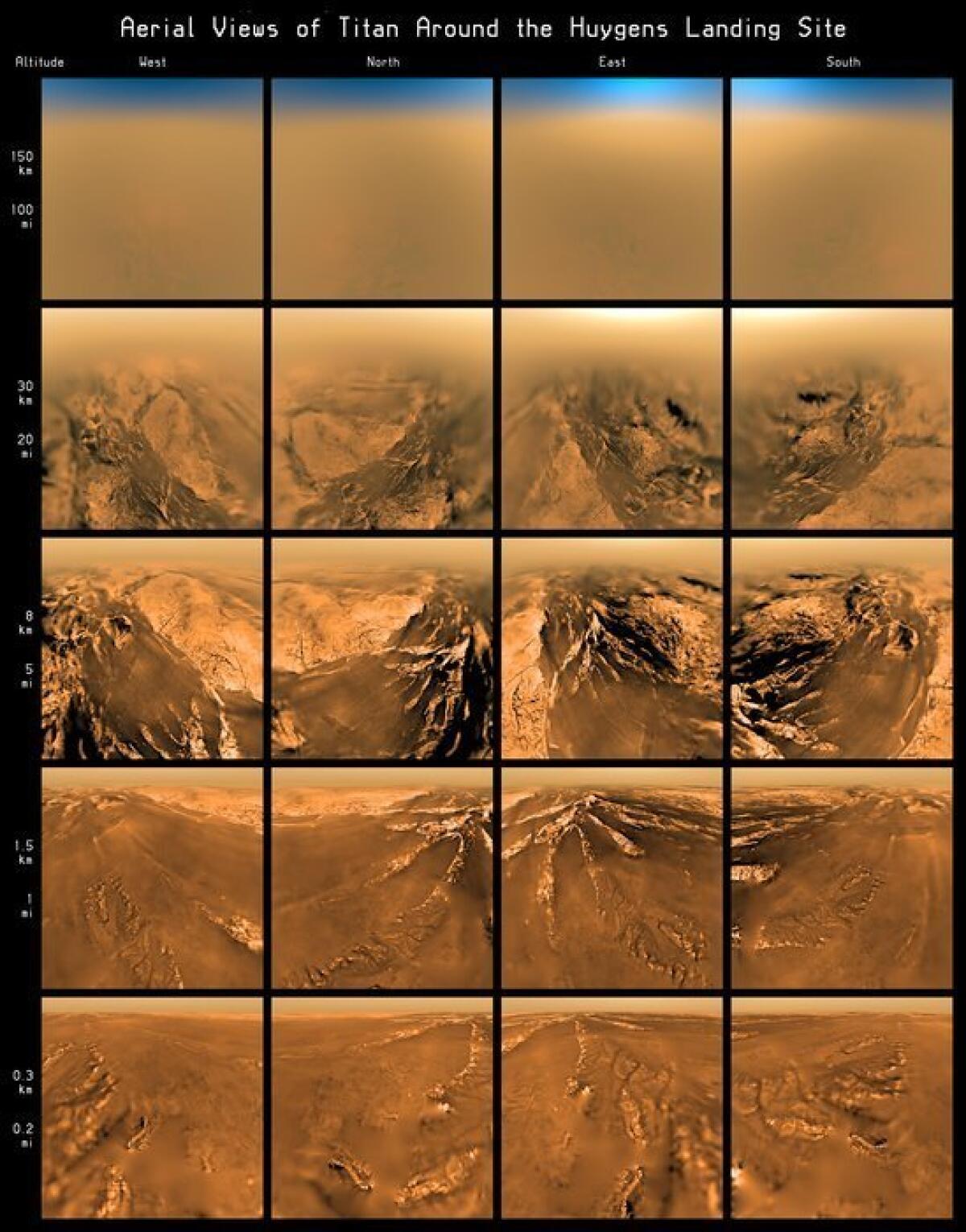
July 14, 2005
Active Enceladus
Cassini detects a cloud of water vapor and ice emanating from the southern pole of Enceladus — a discovery that astonishes scientists. The spacecraft also reveals that the moon’s surface is young, complex and has many fewer craters than expected. Discoveries from Enceladus are some of the most significant of the entire Cassini mission.

March 9, 2006
A watery world
After analyzing Cassini’s detailed images of Enceladus and its plumes, scientists conclude that reservoirs of liquid water are hidden just beneath the moon’s icy surface. That water escapes into space from fractures that resemble a tiger’s stripes. Scientists had considered the possibility that the plumes were fed by surface ice, but they ultimately decided that wasn’t the case.
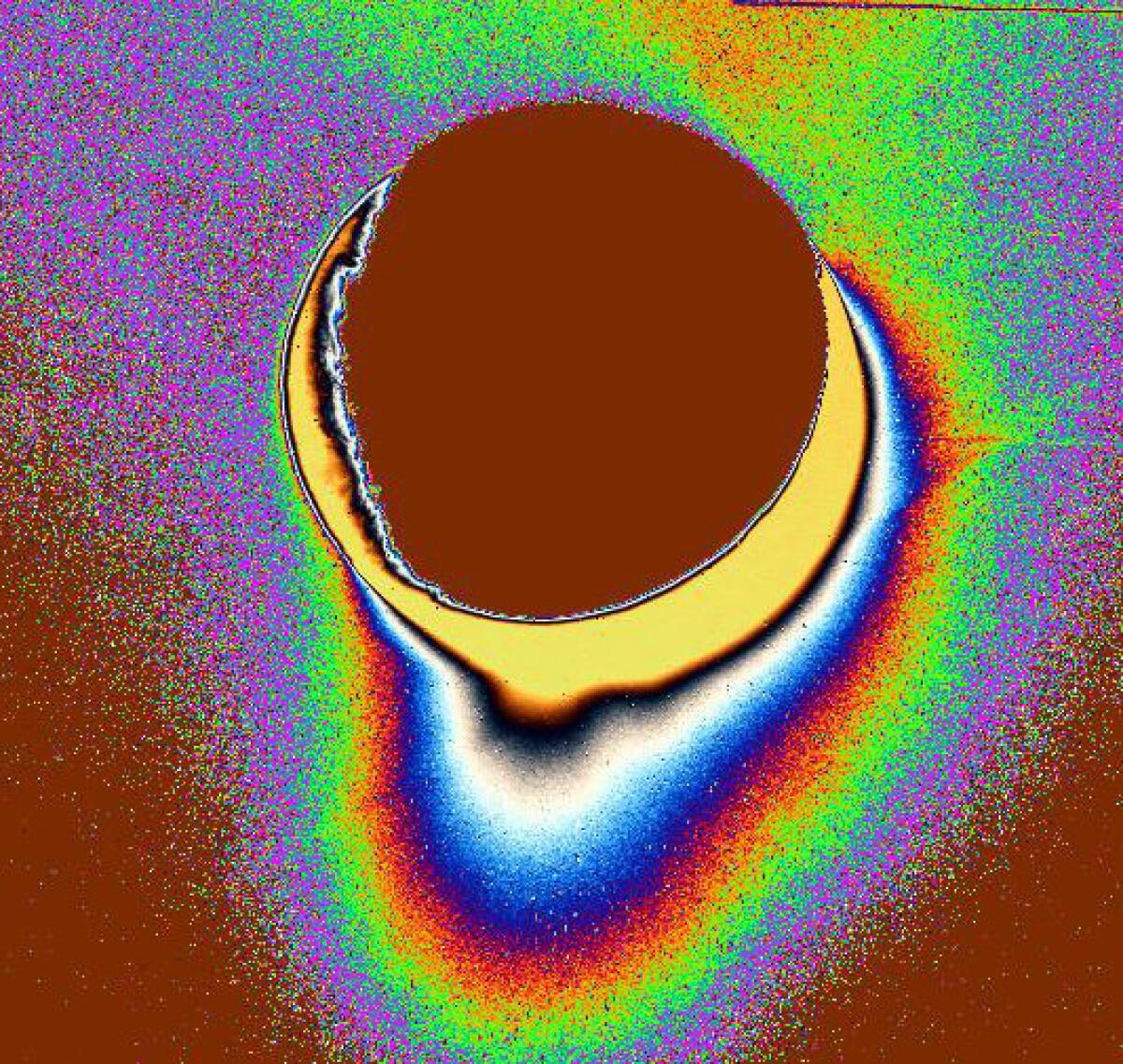
July 22, 2006
Titanic lakes
Cassini’s radar spots dozens of liquid lakes on Titan, including some that measure nearly 20 miles across. That makes Titan the only other place in the solar system with a stable liquid on its surface. The lakes aren’t made of water as they are on Earth; instead, they probably contain liquid methane or a methane-ethane combination. Scientists say the hydrocarbons in Titan’s smoggy atmosphere can probably be traced to these lakes.
Sept. 15, 2006
Put a ring on it
A mosaic of 165 images taken by Cassini over a three-hour period revealed rings made of microscopic particles that were previously unknown to exist. The faint rings were visible because the sun, Saturn and Cassini were aligned in such a way that the planet shielded the spacecraft from the sun. The newly discovered rings lie just beyond the bright rings but inside the more distant G and E rings.

Oct. 10, 2007
Tiger-stripe jets
Scientists report in the journal Nature that they have traced the source of eight jets on Enceladus. All of them emanate from the moon’s “tiger stripe” fractures. The jets release water vapor, ice particles and trace amounts of organic compounds.

March 13, 2008
Plume sample
Cassini flies through an Enceladus plume, coming within 120 miles of the moon’s surface as it was spraying its brew at speeds of about 800 mph. Instruments aboard Cassini sampled the plume and detected water vapor, carbon dioxide, carbon monoxide, volatile gasses and organic materials. The tiger-stripe fissures from which the plumes emanate were found to be hotter than the surrounding area.
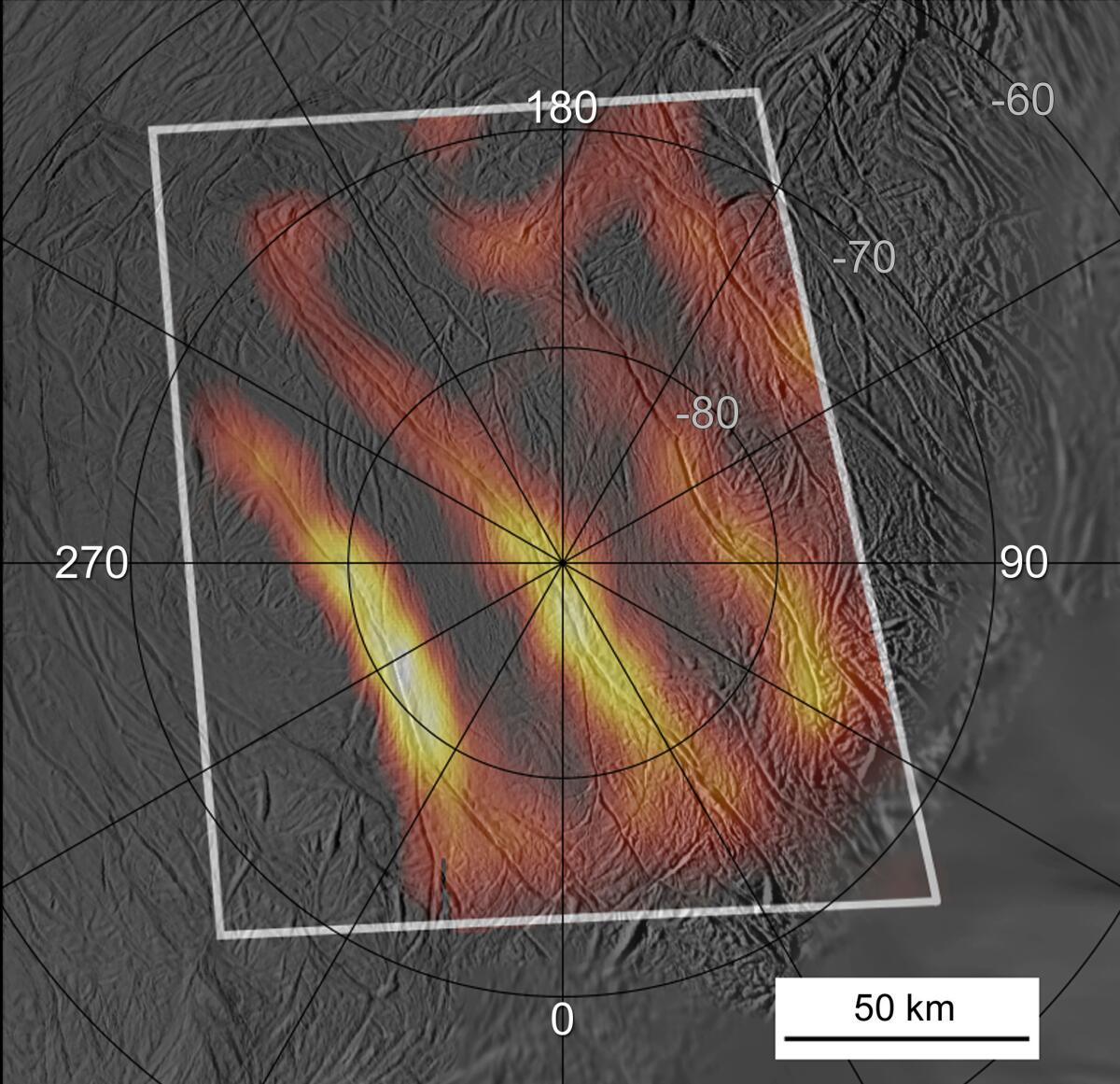
March 3, 2009
Another moon
Cassini discovers the moon Aegaeon, the smallest of the many moons in orbit around Saturn. Aegaeon is nearly hidden in Saturn’s G ring. Shaped like a football, its average radius is only 0.2 miles.
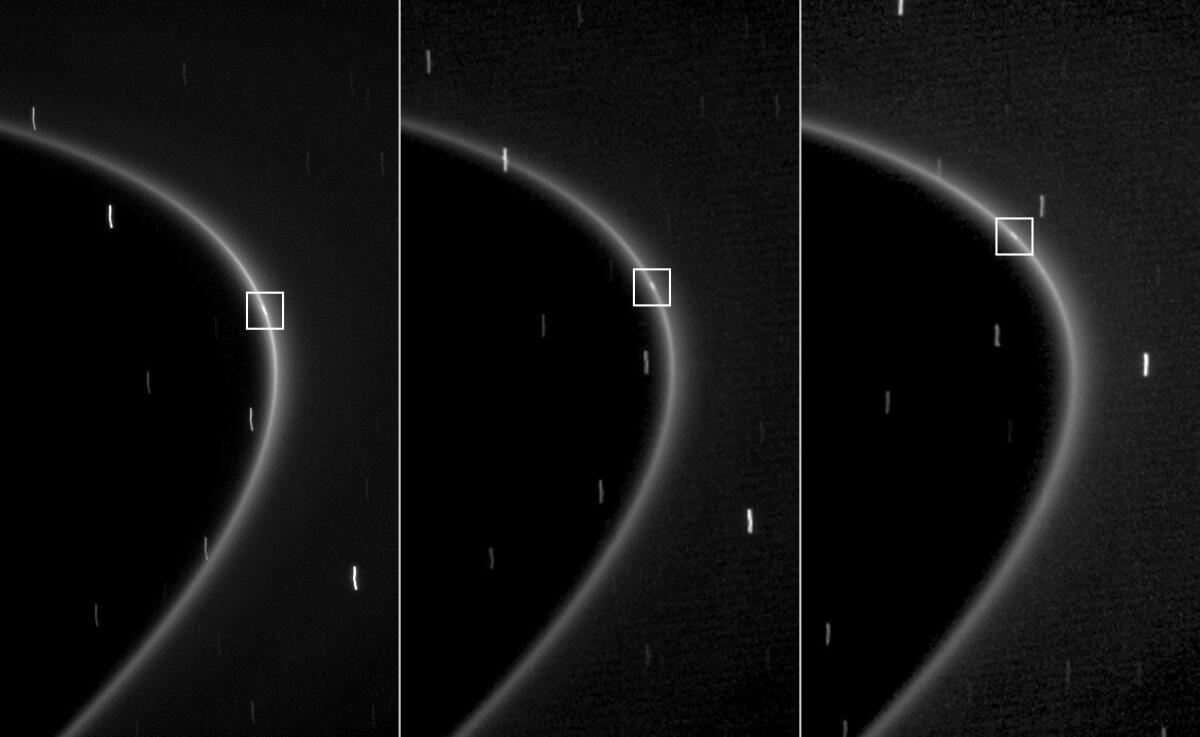
July 22, 2009
Finding ammonia in the Enceladus plume
Cassini scientists announce that ammonia is one of the chemicals in the Enceladus plume. This is a very strong sign that there is liquid water beneath the moon’s frozen crust. When mixed with ammonia, water is able to stay in liquid form at temperatures as low as -143 degrees Fahrenheit. With liquid water and organic materials present on Enceladus, the possibility for life becomes more intriguing.
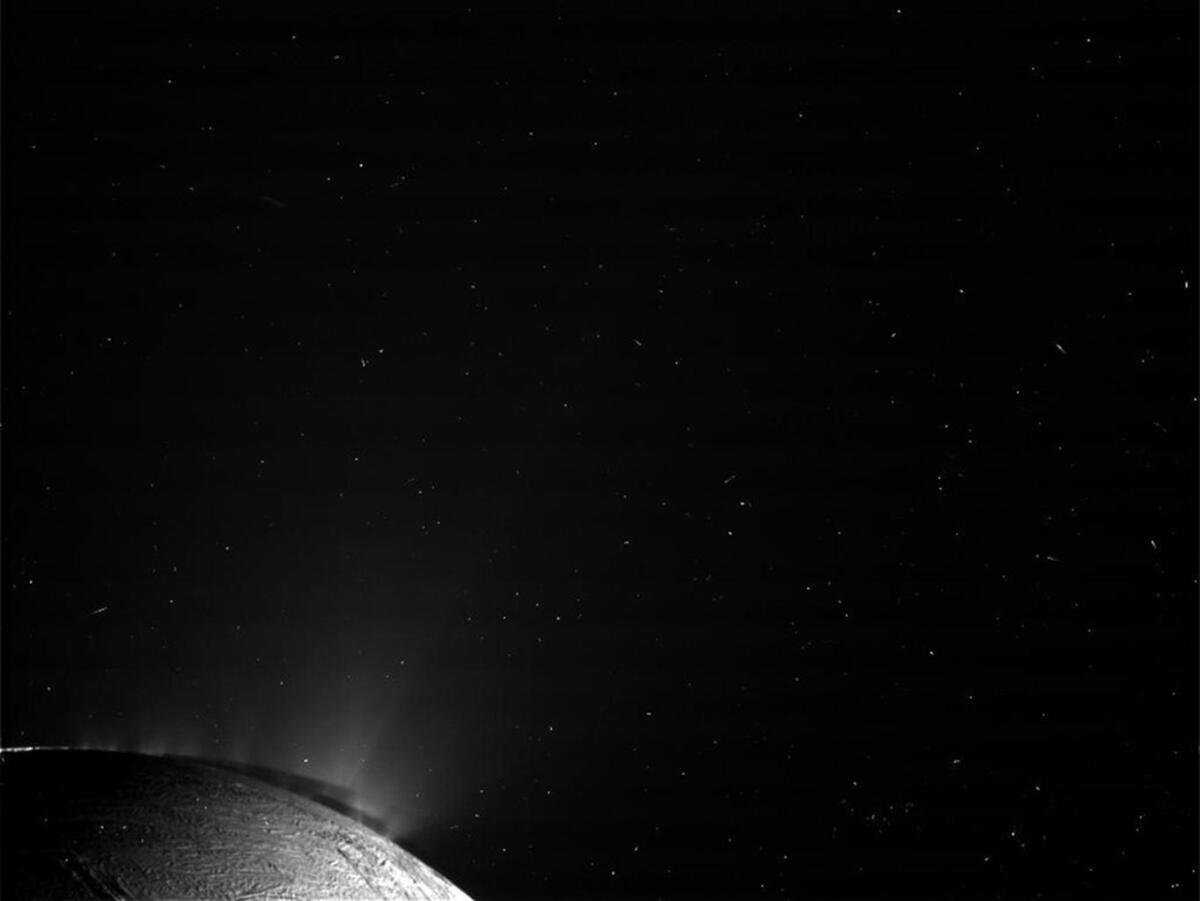
Sept. 14, 2009
The Dione Belt
Cassini scientists discover a temporary magnetosphere around Saturn. Since it is near the orbit of the moon Dione, scientists dub it the “Dione Belt.” The belt itself was detectable by Cassini’s instruments for only a few weeks in 2005. The charged particles that made up the belt were probably absorbed by Dione and another moon, Tethys.
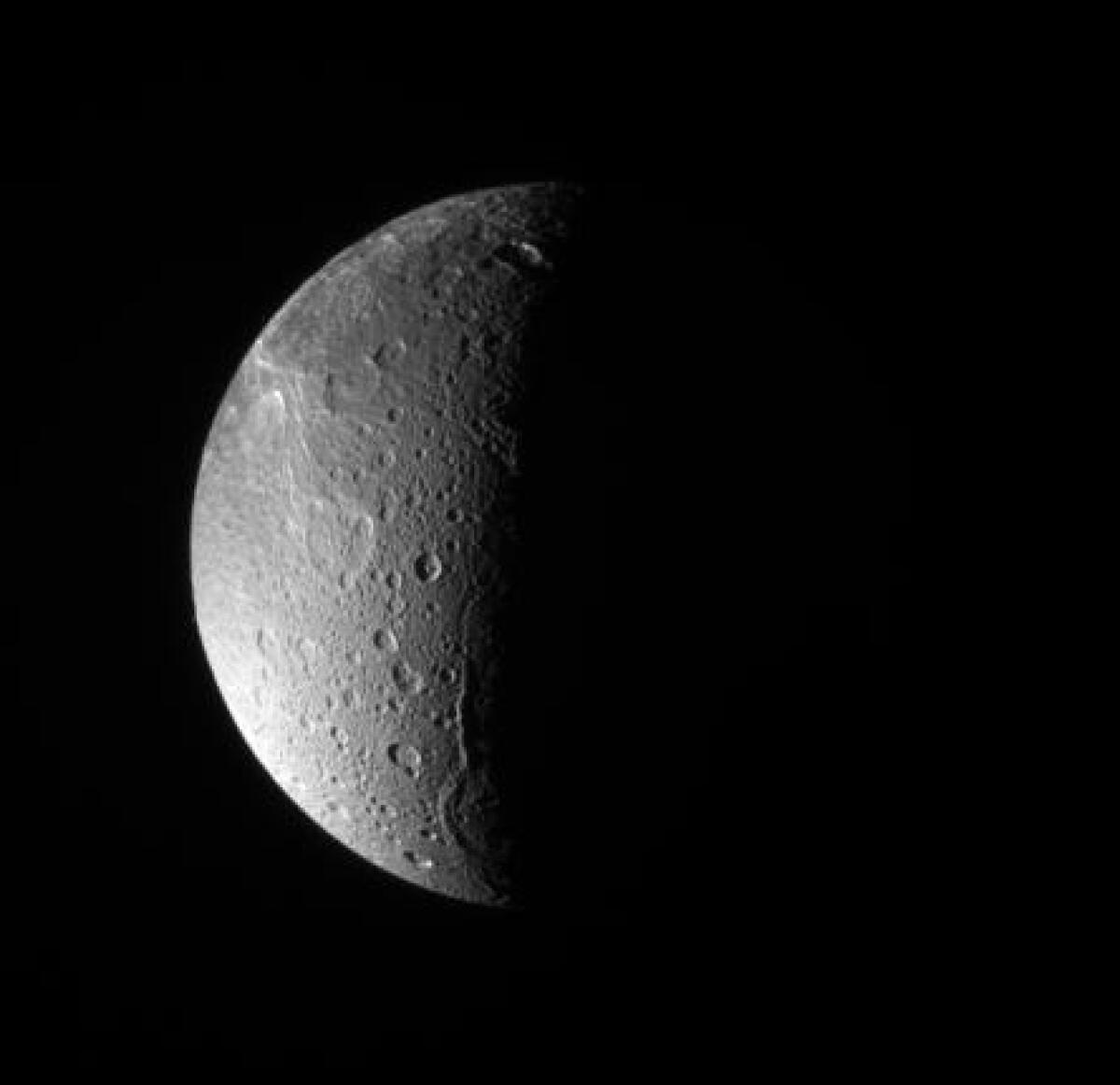
Nov. 29, 2010
Another atmosphere with oxygen
Cassini finds a very thin atmosphere, called an exosphere, surrounding Saturn’s icy moon Rhea. What’s more, the exosphere contains molecules of oxygen and carbon dioxide. Scientists think the oxygen travels from the surface to the exosphere under the influence of Saturn’s magnetic field. Rhea joins Earth as the only bodies known to have oxygen in their atmospheres.
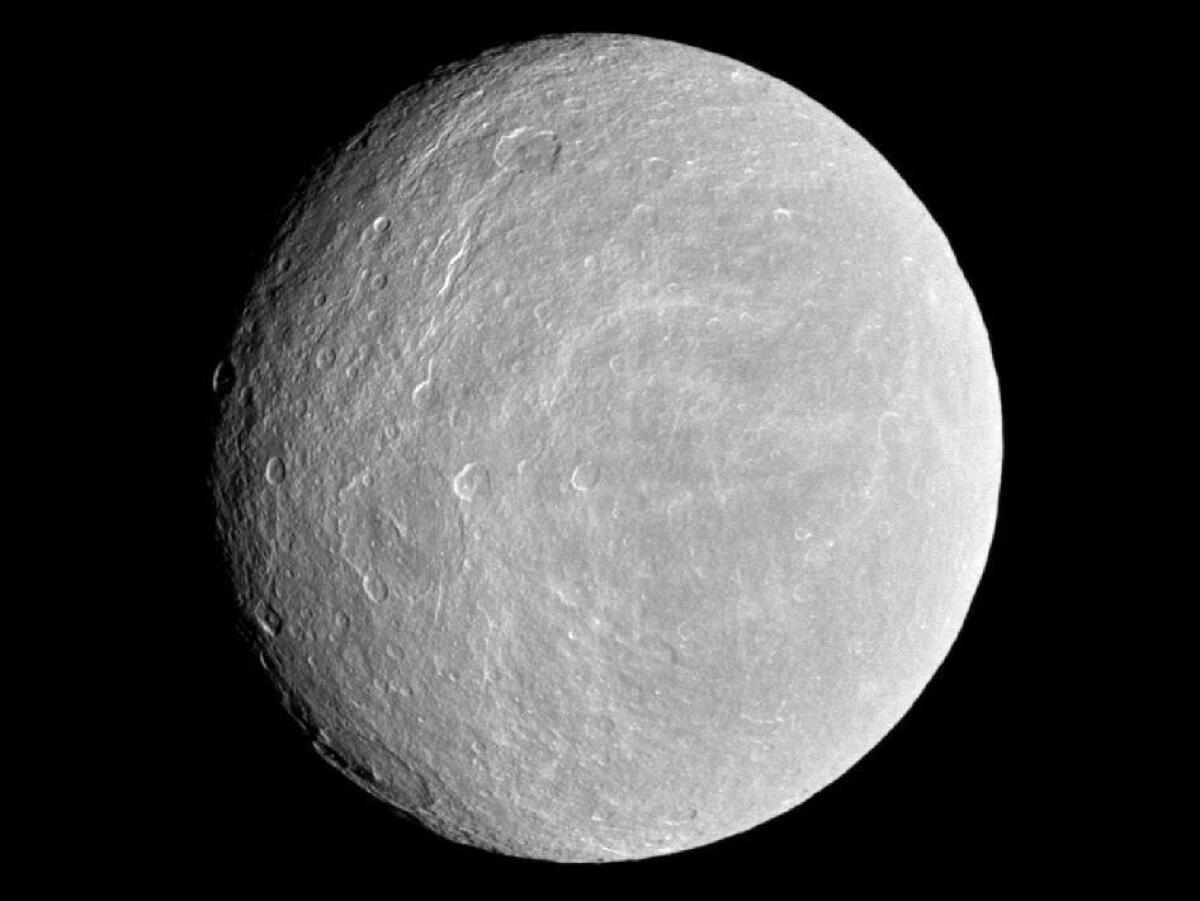
Dec. 5, 2010
Monster storm on Saturn
Cassini spies a monster storm on Saturn’s northern hemisphere. It measured about 9,000 miles from north to south and about 190,000 miles from east to west. It also churned up material from 100 miles below the surface. About 12 weeks in, the storm had wrapped itself around the entire planet.
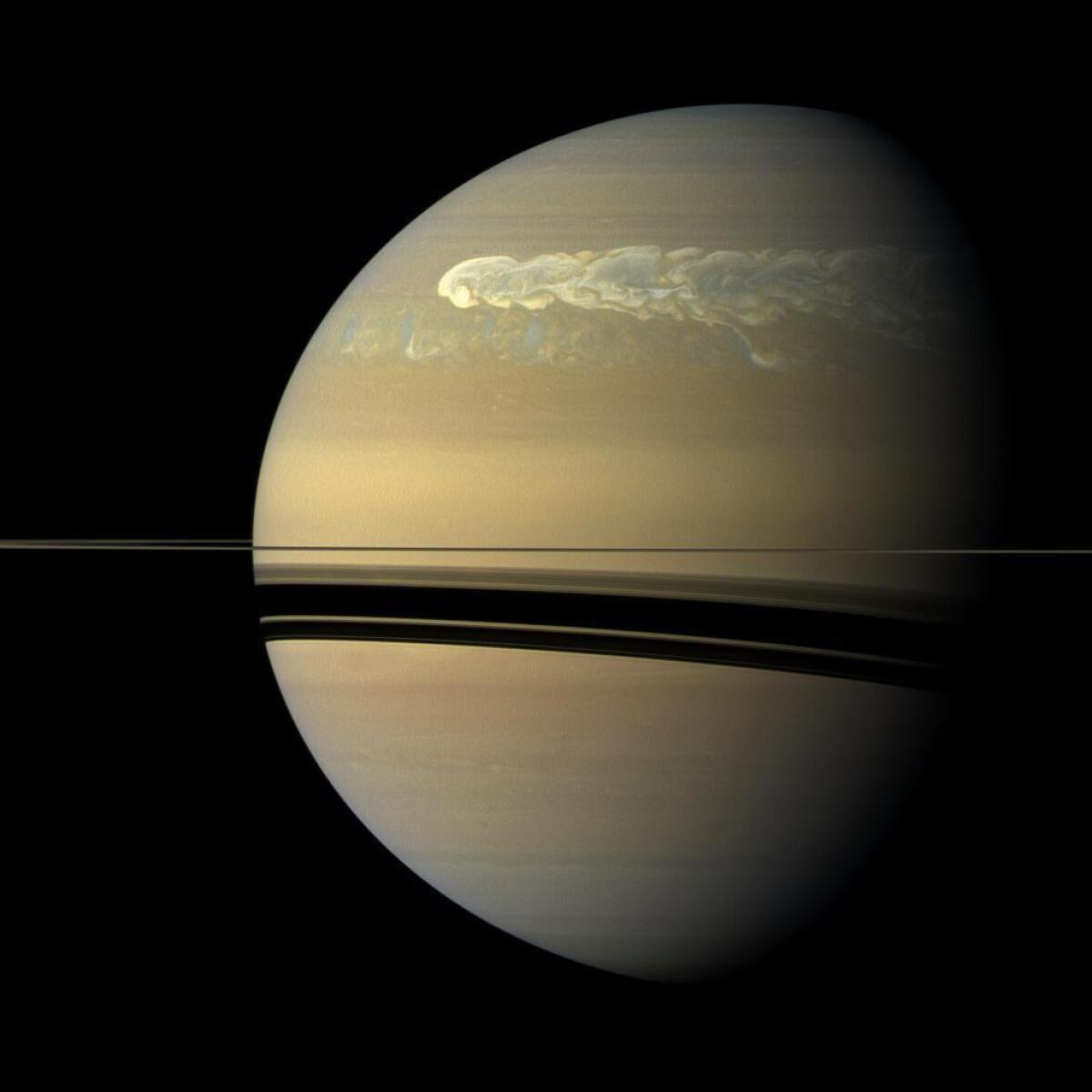
June 22, 2011
A hidden ocean
After studying the ice grains shooting out of Enceladus, scientists determine that the ones closer to the moon’s surface are rich in sodium and potassium salts. Their make-up indicates they evaporated from liquid salt water, suggesting that a hidden ocean lies beneath the Enceladus surface. The finding is reported in the journal Nature.

March 2, 2012
Dione joins the oxygen club
Scientists didn’t know whether Dione even had an exosphere, but Cassini detected a sparse exosphere with one oxygen ion per 11 cubic centimeters of space. The exosphere is so thin that its density at the moon’s surface is the same as Earth’s atmosphere 300 miles up. Scientists think the oxygen comes from water ice on Dione’s surface, which is released by photons from the sun or other energetic particles.
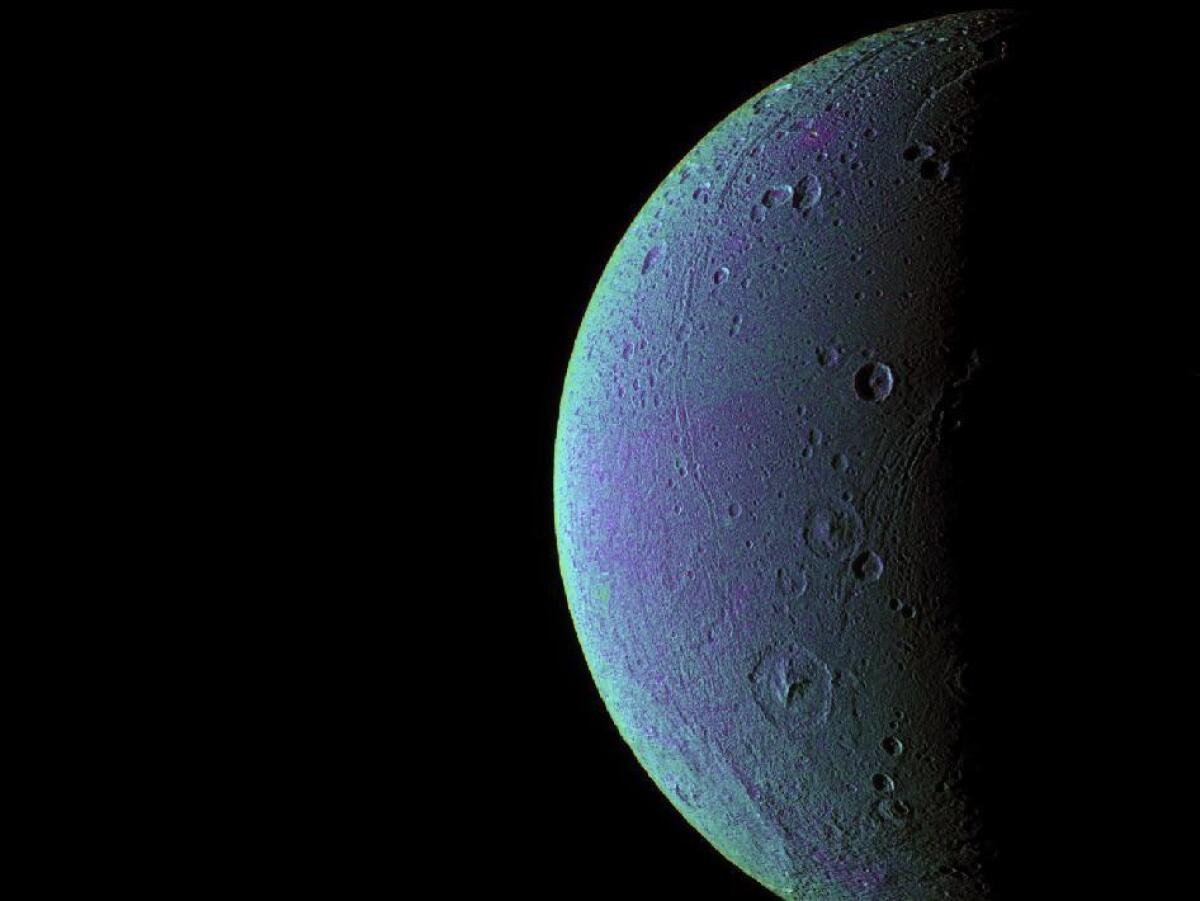
April 23, 2012
Punching through Saturn’s F ring
Cassini spots an object about half a mile wide punching through Saturn’s F ring, leaving a trail of icy particles in its wake. The length of the trail ranges from about 47 miles to 155 miles over the 11 hours and 5 minutes of elapsed time captured in the movie below. Cassini scientists think the objects penetrating the ring are icy ring particles pushed together by the moon Prometheus. They call the trails “mini-jets”
July 19, 2013
Wave at Saturn
Cassini takes Earth’s picture from 898 million miles away. Both Earth and the moon are visible to the right of Saturn’s south pole, below the rings. Cassini’s home planet is visible because Saturn was blocking the sun. When mission managers realized this would be the case, they kicked off the “Wave at Saturn” campaign to encourage Earthlings to smile for Cassini’s camera.
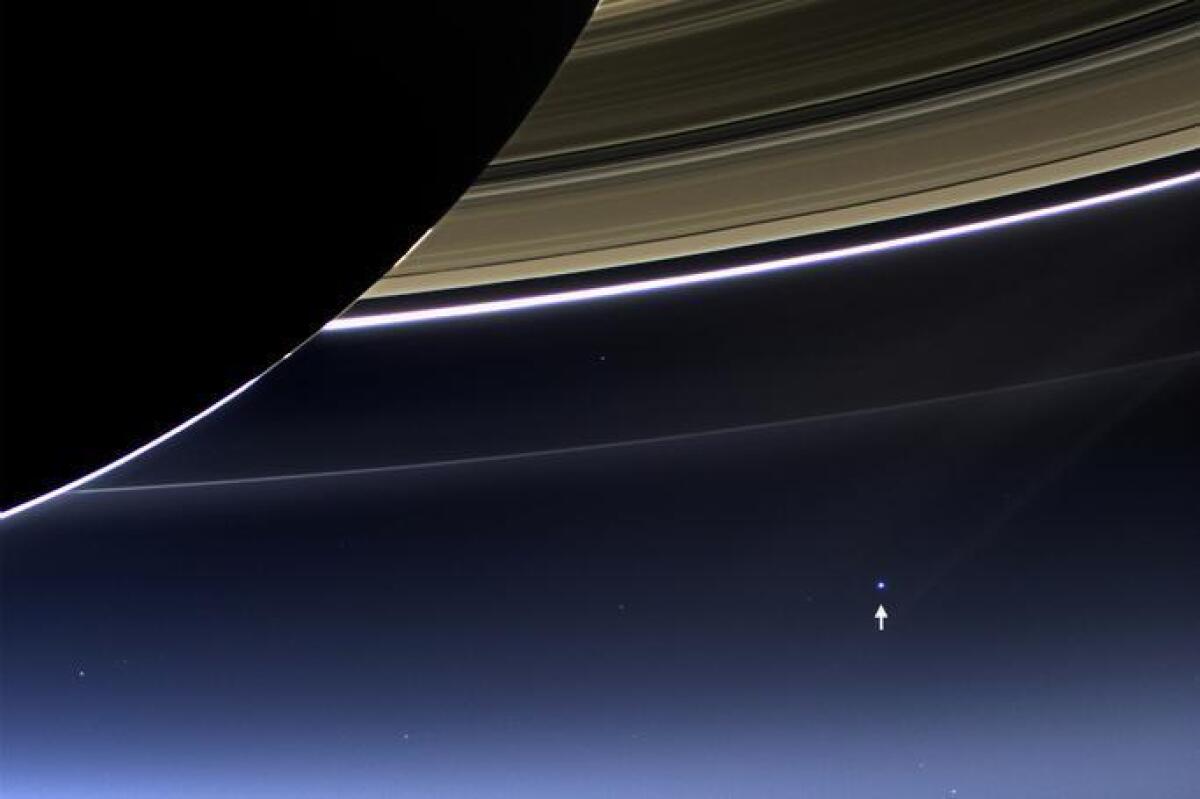

Dec. 4, 2013
Hexagonal storm in motion
Saturn’s north pole has a six-sided jet stream, and Cassini captures all of it for the first time in a high-resolution movie. The weather feature spans about 20,000 miles and is powered by 200-mph winds. The storm, known as the hexagon, has been active for decades (if not centuries) and is thought to be unique in the solar system. The version below uses color filters to distinguish between different types of particles in the atmosphere.

Jan. 28, 2015
New view of Titan
In December 2013, Cassini visited Titan while it was outside of Saturn’s protective magnetosphere, a situation that occurs only 5% of the time. In January 2015, scientists reported that the solar wind enveloped the unprotected moon, creating a shock wave when it slammed into Titan’s atmosphere. This is similar to the way the solar wind interacts with Venus or Mars, two planets that lack a magnetic field.
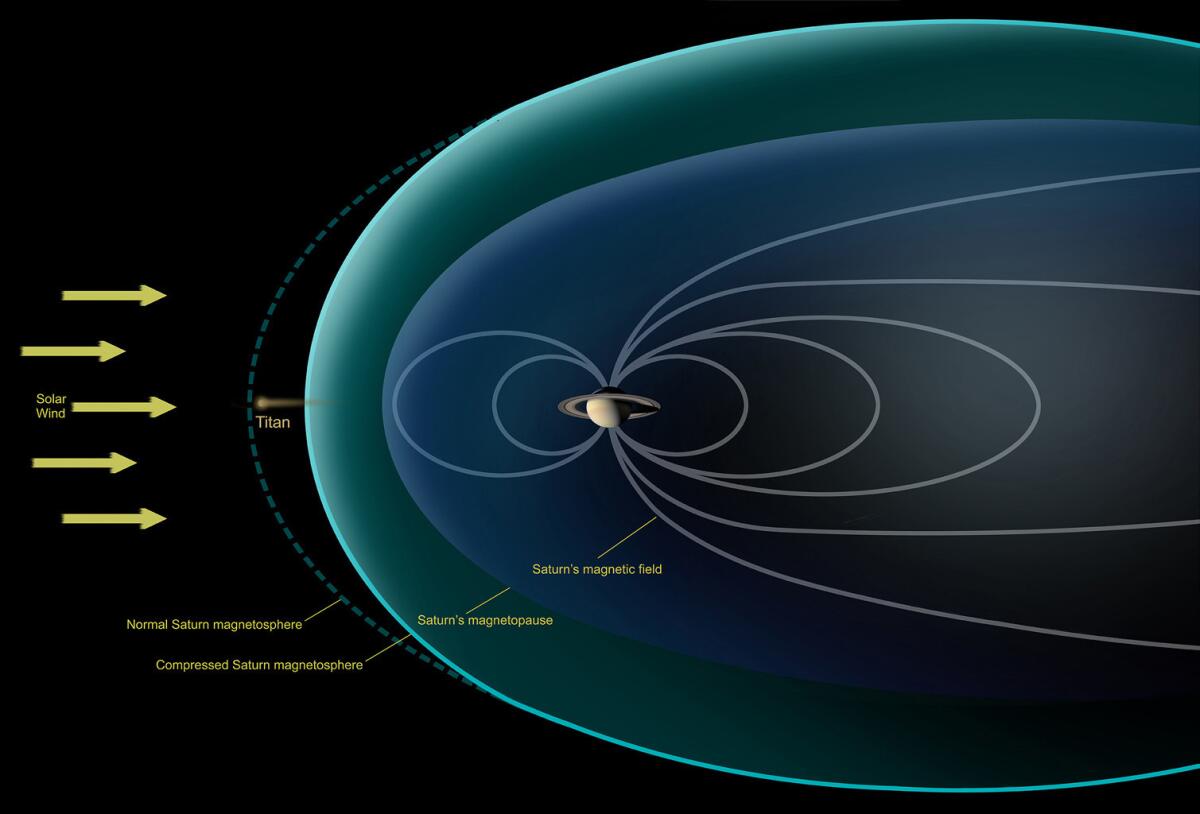
Aug. 28, 2017
Last view of Enceladus’s plume
Cassini conducts its last observation of the jets spraying out of Enceladus’ south pole. The movie below was captured over a period of about 14 hours as the moon goes from being partially lit by Saturn into complete darkness. NASA scientists are now contemplating a follow-up mission to Enceladus, which they have dubbed Enceladus Life Finder.

Sept. 11, 2017
Kissing Titan goodbye
Cassini gives Titan a “goodbye kiss” during its final flyby of the giant moon. Although the spacecraft remained rather distant, it came close enough for Titan’s gravity to slow it down. That will ensure Cassini enters Saturn’s atmosphere at an angle that causes it to incinerate. Although it sounds harsh, the mission managers decided to destroy Cassini to protect Saturn’s moons from possible contamination.
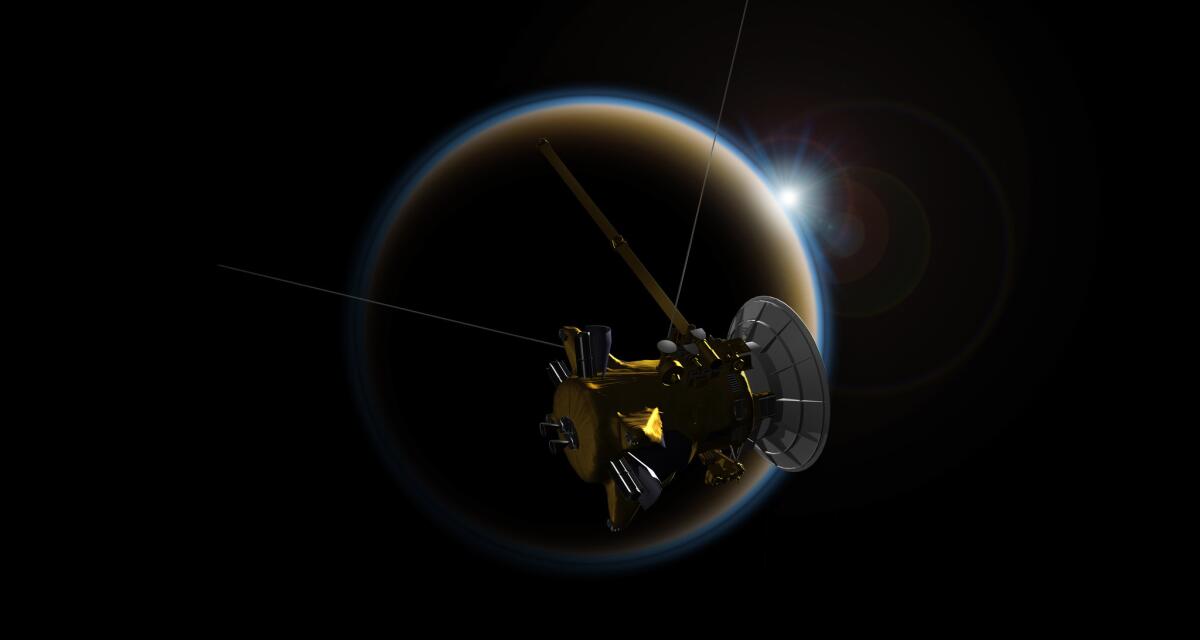
Follow me on Twitter @LATkarenkaplan and "like" Los Angeles Times Science & Health on Facebook.
MORE ON CASSINI’S GRAND FINALE
'OK. Let’s do it!' An oral history of how NASA's Cassini mission to Saturn came to be
VIDEO: What we learned from Cassini
Check out Cassini’s jaw-dropping discoveries of Saturn’s moons
After 13 years at Saturn, NASA’s Cassini spacecraft is ready for its grand finale
‘OK. Let’s do it!’ An oral history of how NASA’s Cassini mission to Saturn came to be




